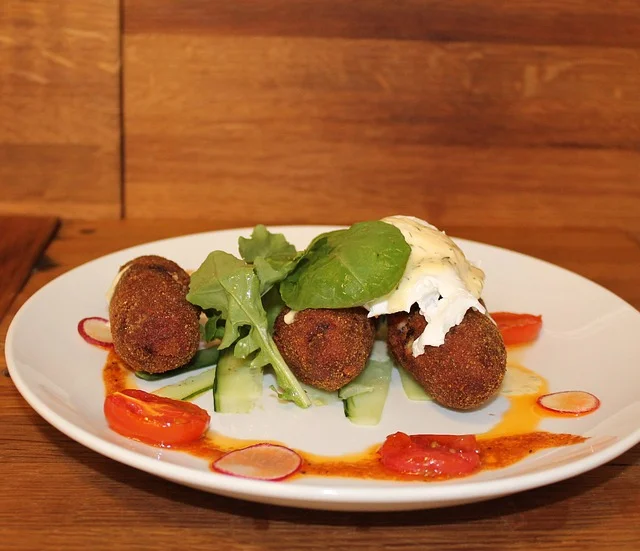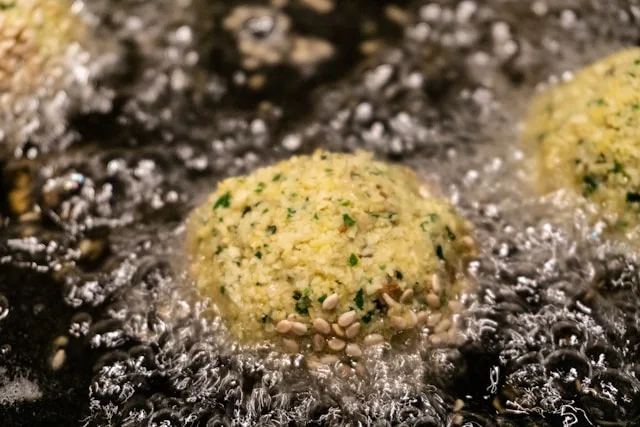Embracing Tradition: Exploring the Delightful World of Falafel
Join us on a culinary journey to the heart of Middle Eastern
cuisine as we unravel the delightful story of falafel. With its crispy exterior, tender
interior, and fragrant blend of spices, falafel has captured the hearts and taste buds of
food enthusiasts worldwide. Let's delve into the history, ingredients, and cultural
significance of this beloved dish.
Ancient Origins: Tracing the Roots of Falafel
Falafel's origins can be traced back thousands of years to ancient
Egypt, where it was initially made with fava beans. Over time, the recipe evolved, and
chickpeas became the primary ingredient, particularly in the Levant region. Today, falafel
is enjoyed across the Middle East and beyond, cherished for its delicious flavor and
satisfying texture.
Essential Components: Crafting the Perfect Falafel
At the heart of falafel lies a simple yet flavorful mixture of
soaked chickpeas, fresh herbs such as parsley and cilantro, garlic, onions, and a blend of
aromatic spices like cumin, coriander, and paprika. The mixture is finely ground and shaped
into small balls or patties before being deep-fried to golden perfection. The result is a
crispy, golden-brown exterior with a tender, herb-infused interior bursting with flavor.
Versatility on the Plate: Serving Falafel in Various Forms
Falafel is incredibly versatile and can be enjoyed in numerous ways. It is commonly served
in pita bread, accompanied by a variety of toppings such as fresh vegetables, pickles,
tahini sauce, and hummus. Alternatively, falafel can be served as part of a mezze platter
alongside other Middle Eastern delights like tabbouleh, baba ganoush, and stuffed grape
leaves. Whether enjoyed as a sandwich, salad topping, or appetizer, falafel offers a
satisfying and flavorful dining experience.
Cultural Significance: Falafel in Middle Eastern Cuisine
In Middle Eastern cuisine, falafel holds a cherished place as a staple street food and a
beloved comfort dish. It is enjoyed by people of all ages and backgrounds and is often
consumed as a quick and satisfying meal on the go. In addition to its culinary significance,
falafel has cultural importance, symbolizing unity, hospitality, and the rich culinary
heritage of the region.
Modern Innovations: Putting a Contemporary Spin on Falafel
While traditional falafel remains a beloved classic, chefs and home cooks alike have
experimented with innovative variations to cater to modern tastes and dietary preferences.
Some contemporary interpretations include baked falafel for a healthier alternative,
gluten-free versions made with alternative flours, and fusion variations incorporating
ingredients from other cuisines. Despite these adaptations, the essence of falafel its
crispy exterior, flavorful interior, and cultural significance remains intact.
Conclusion: Celebrating the Timeless Appeal of Falafel
As we celebrate the delightful world of falafel, we honor its ancient roots, diverse flavors, and cultural significance. Whether enjoyed on a bustling street corner in the Middle East or savored at a trendy eatery halfway across the globe, falafel continues to captivate food enthusiasts with its irresistible taste and enduring appeal. So, the next time you crave a taste of tradition and a burst of flavor, indulge in the delightful experience of falafel and savor its timeless charm.





